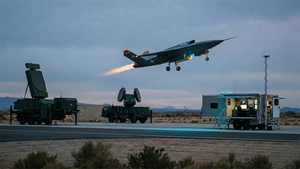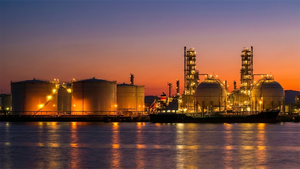
Lift truck and material handling solutions manufacturer Hyster-Yale Materials Handling (NYSE: HY) reported Q3 CY2025 results beating Wall Street’s revenue expectations, but sales fell by 3.6% year on year to $979.1 million. Its non-GAAP loss of $0.09 per share was 35.7% above analysts’ consensus estimates.
Is now the time to buy HY? Find out in our full research report (it’s free for active Edge members).
Hyster-Yale Materials Handling (HY) Q3 CY2025 Highlights:
- Revenue: $979.1 million vs analyst estimates of $955.7 million (3.6% year-on-year decline, 2.5% beat)
- Adjusted EPS: -$0.09 vs analyst estimates of -$0.14 (35.7% beat)
- Adjusted EBITDA: $15.1 million vs analyst estimates of $22.1 million (1.5% margin, 31.7% miss)
- Operating Margin: 0.2%, down from 3.2% in the same quarter last year
- Market Capitalization: $604.4 million
StockStory’s Take
Hyster-Yale Materials Handling’s third quarter was marked by a challenging demand environment and persistent cost pressures, resulting in a negative market reaction. Management pointed to broad declines in lift truck demand across all regions, with customers postponing capital expenditures due to tariff impacts, volatile interest rates, and economic uncertainty. CEO Rajiv Prasad described the quarter as one where “the optimism has faded largely due to the impact of tariffs on the market demand and on our costs,” underscoring that many customers are taking a more cautious approach to investment. The combination of lower truck volumes and elevated tariff-related material costs led to margin compression, while bookings activity, though up sequentially, was driven by higher pricing rather than improved end-market demand.
Looking forward, Hyster-Yale’s outlook remains cautious as management expects market demand to stay soft into early next year, with persistent tariff and cost headwinds limiting near-term profitability. The company is emphasizing operational flexibility, targeted cost reductions, and new modular products to support resilience. CFO Scott Minder stated, “We anticipate that elevated tariff levels and softer market demand will remain negative factors into early 2026,” while also highlighting ongoing efforts to streamline manufacturing and enhance cost competitiveness. Management believes that targeted investments in product innovation, automation, and flexible manufacturing will better position the company for growth once demand conditions stabilize and customers resume deferred fleet upgrades.
Key Insights from Management’s Remarks
Management attributed third quarter performance to contracting market demand, persistent tariff costs, and delays in customer purchasing decisions, while noting some progress in bookings and product innovation.
-
Tariff pressures dampen results: Elevated tariffs, especially on steel and imported components, drove up material costs and directly reduced operating profit. Management noted $40 million in direct tariff costs during the quarter, with less than half offset by pricing actions. The expiration of certain tariff exemptions looms as an ongoing risk.
-
Delayed customer decision-making: Across core regions, customers postponed new lift truck orders due to uncertainty about interest rates, tariffs, and broader economic conditions, leading to lower truck volumes and a contracting backlog. Management observed that “decision-making is slow,” with many customers still digesting prior purchases.
-
Bookings increase on higher prices: Despite softer end-market demand, bookings increased sequentially due to price increases required to offset higher input costs rather than actual volume recovery. Gains were most notable in EMEA and APAC, with Class 1 trucks showing growth in the warehouse segment.
-
Competitive landscape shifts: The company faces heightened competition from low-cost foreign manufacturers, particularly in Europe and South America. Competitive intensity is pressuring margins, but management is responding by expanding modular and scalable product offerings, leveraging its China operations for cost-effective solutions.
-
Innovation and customer engagement: Hyster-Yale is accelerating the rollout of modular, scalable lift trucks and advanced automation technologies. The company is also deepening customer engagement, providing tailored fleet solutions and after-sales support to address operational needs and encourage new investments amid a cautious environment.
Drivers of Future Performance
Hyster-Yale’s forward guidance is shaped by continued tariff and demand headwinds, with management focusing on flexibility, new product launches, and cost discipline to navigate ongoing uncertainty.
-
Tariff and cost mitigation: Management expects tariffs to remain a major challenge into next year. While sourcing teams are pursuing alternative suppliers and regional solutions, pricing actions have only partially offset higher material costs. Any positive changes to tariff policy could improve financial performance, but uncertainty persists.
-
Production and backlog management: The company is adjusting production rates downward to align with lower bookings and shrinking backlog. Management anticipates further backlog degradation in the near term, with production schedules and cost structure to be managed conservatively until demand stabilizes.
-
Product innovation and automation: Hyster-Yale is investing in modular lift trucks, lithium-ion battery options, and automation technologies to capture market share as customers eventually upgrade aging fleets. Management views these initiatives as key to building resilience and capturing growth when the market recovers, but adoption will depend on customer readiness and broader economic trends.
Catalysts in Upcoming Quarters
In the coming quarters, the StockStory team will be monitoring (1) the pace at which modular and lithium-ion lift trucks are adopted by customers as deferred investments potentially resume, (2) the effectiveness of Hyster-Yale’s cost-control efforts and progress on manufacturing footprint optimization, and (3) developments in tariff policy and their impact on both input costs and competitive positioning. The trajectory of global demand, particularly in heavy manufacturing sectors, will be a key marker for eventual recovery.
Hyster-Yale Materials Handling currently trades at $34.08, down from $34.63 just before the earnings. In the wake of this quarter, is it a buy or sell? Find out in our full research report (it’s free for active Edge members).
High Quality Stocks for All Market Conditions
Fresh US-China trade tensions just tanked stocks—but strong bank earnings are fueling a sharp rebound. Don’t miss the bounce.
Don’t let fear keep you from great opportunities and take a look at Top 9 Market-Beating Stocks. This is a curated list of our High Quality stocks that have generated a market-beating return of 183% over the last five years (as of March 31st 2025).
Stocks that made our list in 2020 include now familiar names such as Nvidia (+1,545% between March 2020 and March 2025) as well as under-the-radar businesses like the once-micro-cap company Kadant (+351% five-year return). Find your next big winner with StockStory today.
StockStory is growing and hiring equity analyst and marketing roles. Are you a 0 to 1 builder passionate about the markets and AI? See the open roles here.







